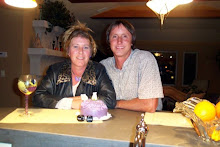WHAT IS A MONOLOGUE?
- A monologue expresses the thoughts of one person.
- A monologue should have a beginning, middle and end.
- A monologue should always reveal something - be it a story, a secret, an answer to a question, or an emotional outpouring.
PART THREE of this series on Writing Monologues will focus on emotion.
It is essential that there is an emotional journey in your monologue. Just as there needs to be a journey in the story from beginning to end, there needs to be an emotional journey: a change, a development, a transfer from one emotional state to another. There's nothing worse than a monologue that picks a single emotional state and stays there for the whole piece! Variety is the key.
What does that mean?
Think of your monologue as a roller coaster. There are ups and downs, peaks and valleys. That's what makes the roller coaster exciting, the changes in the journey from beginning to end. The mistake that a lot of writers make is to think that intense equals interesting. That if there are a lot of exclamation marks, an audience will be engaged. Nothing could be farther than the truth. Audiences do not like to be yelled at. Certainly you can shock an audience, you can have intense moments. But the longer that intensity goes, the more your audience will retreat. The more they will think about their dry-cleaning or work. Yelling pushes an audience out of the world of the play, something you definitely do not want.
Also, we as human beings never feel one single emotion at a time. We are happy/sad. Embarrassed/mad. The more variety in the emotion of the monologue, the more three dimensional the character, the more connection with your audience. That's how you grab and audience and keep them: connect through emotion, don't direct through emotion.
Use this exercise to practice changing emotion within a monologue.
EXERCISE
Write a monologue in which a character watches a parade. Re-write to explore the following emotional journeys:
- The character starts MAD and ends HAPPY.
- The character starts SAD and ends PROUD.
- The character starts FEARFUL and ends JOYFUL.
- The character starts JEALOUS and ends with COMPASSION.
Every writer wants to write a monologue that bring down the house. That show stopping moment, that brings the audience to the edge of their seats. How is that accomplished? It's just as easy to go the other way, to write a monologue that completely slows the pace with selfish, indulgent, 'I remember when' writing.
The answer can often be found in the character's 'need to speak.' Why does the character need to speak? What is happening that propels the character speak - why now? Why not yesterday or tomorrow? How do they go for that need? What happens to the character emotionally if they succeed? What happens to the character emotionally if they fail?
The more you determine the need to speak, the more urgent the moment. And urgency will draw an audience in every time.
EXERCISE
- Take your Parade monologue.
- Determine on the best 'need to speak' scenario for your character.
- Determine the emotional quality that best represents this 'need' for the beginning of the monologue.
- Decide if the character succeeds or fails in achieving their 'need' at the end of the monologue.
- Determine the emotional quality that best represents their success or failure.
- Re-write the monologue to show all of the above.
Make every monologue you write an emotional, urgent, need to speak moment.
The next article in this series on Writing Monologues will explore Language Struture. All characters should speak in a specific language that illuminates their personality. This is especially important in monologues, where we focus on a character for more than a couple of lines.
Lindsay Price is the resident playwright for Theatrefolk, an independent publisher of playscripts for schools and student performers.

No comments:
Post a Comment